Choose Which Fishing Trip You Would Like To
Learn More About
Peacock Bass Focused Trips
There are 16 species of peacock bass, but these trips focus on catching the largest species, the Cichla, Temensis. Temensis are known as one of the greatest sportfish in freshwater fishing. Their bull dog fighting style, explosive topwater strikes, and beautiful coloration make a must experience for traveling anglers.
Rio Negro Explorer | Brazil
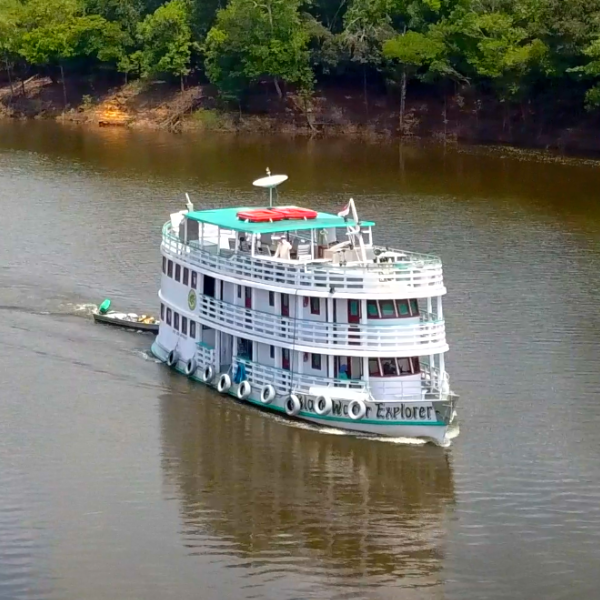
The most consistent fishing trip in the Amazon! This beautiful yacht roams the enormous Rio Negro basin from mid-October through March, concentrating on accessing productive waters.
Floating Bungalows | Brazil
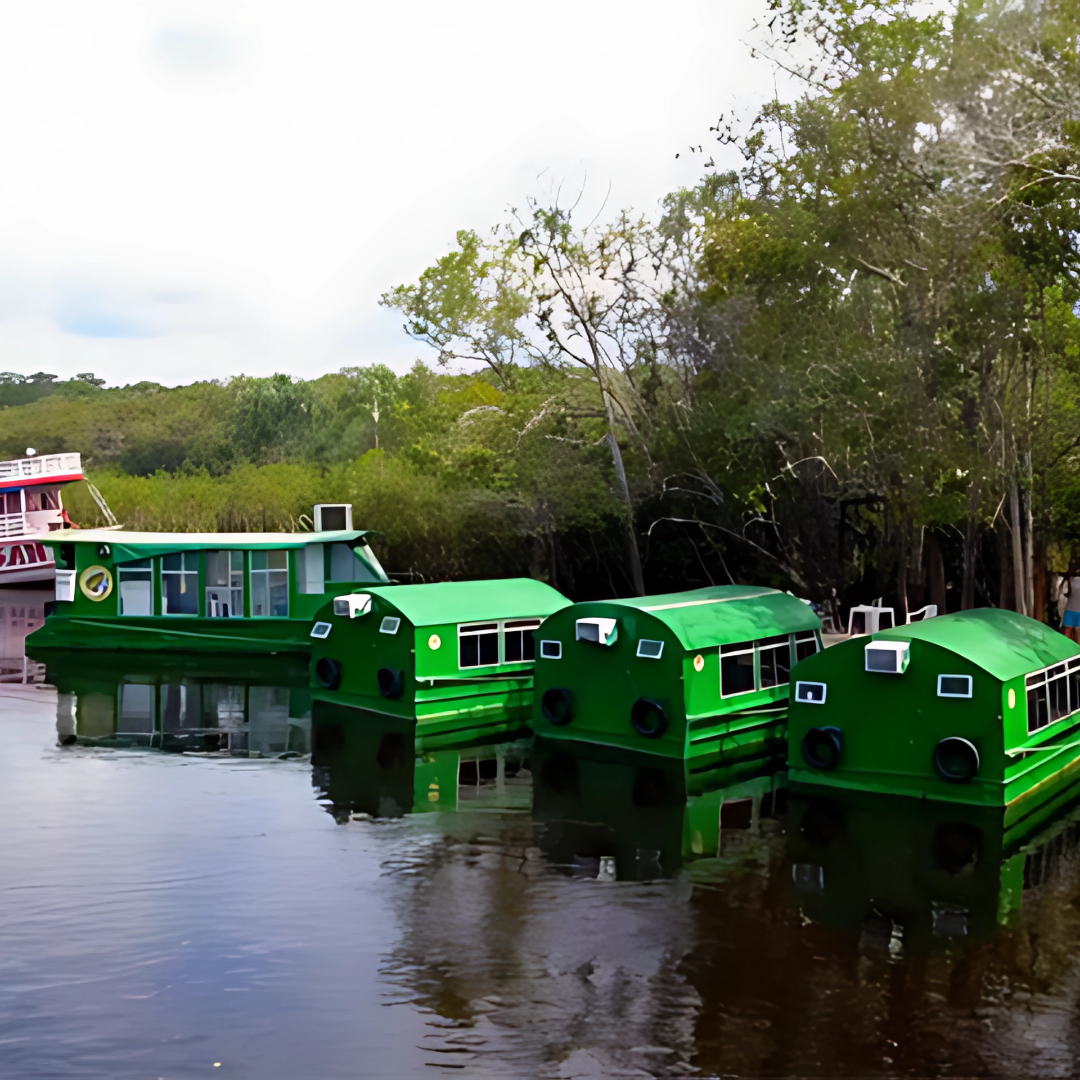
This trip provides a great chance at large peacock bass in an intimate jungle setting. These floating bungalows can take you to the most inaccessible headwaters regions.
Curicuriari | Brazil
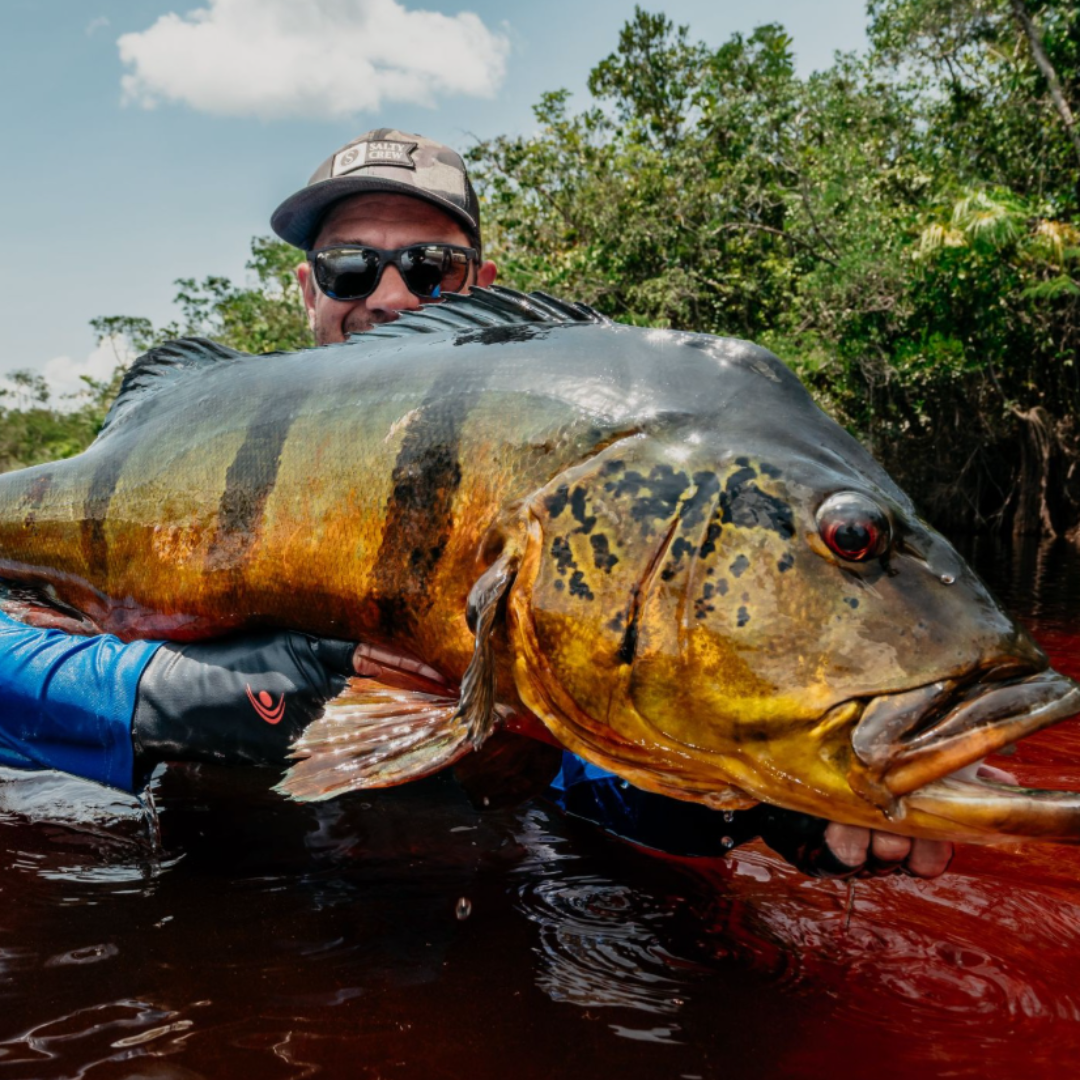
If you're hunting for a real shot at a world-record peacock bass, then this is the place for you. It's already been proven to be a world record class
fishery.
Payara & Multi-Species Focused Trips
Target a wide range of exotic species, including the fearsome payara, also known as the vampire fish. With their long, fang-like teeth and aggressive nature, payara are a top target for adventurous anglers. On our multi-species trips, you’ll also have the chance to catch piranha, bicuda, giant catfish, and more, all in one unforgettable expedition.
Xingu River | Brazil
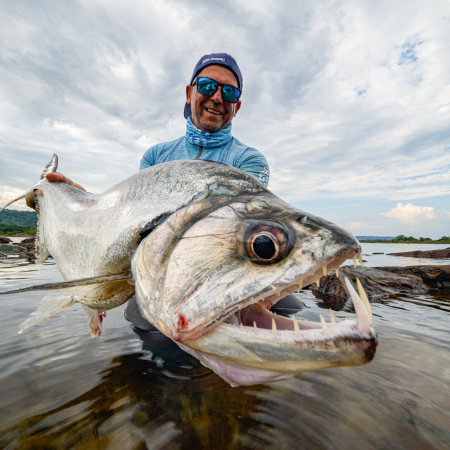
If you’re looking to catch a variety of fish species, then this is the trip for you. Enjoy the diversity of sport fish and the various fishing techniques used to catch them.
Rio Aripuana | Brazil
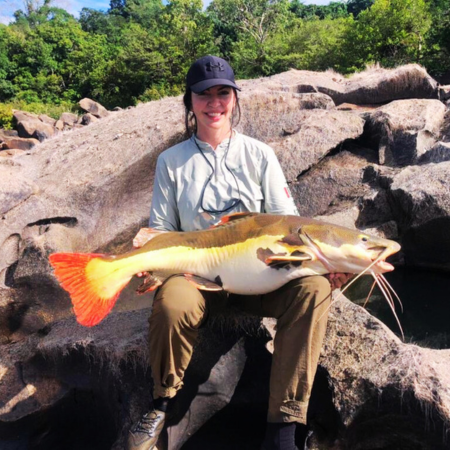
With two tributaries, two lakes, and access to the Aripuanã, you'll find diverse aquatic habitats, including creek mouths, rapids, eddies, and boulders, perfect for a variety of fish species.
Arapaima Focused Trips
Arapaima grow over 250 pounds. These giants are found in lagoons and slow brackish water. Their size and strength are incredible, and you will never forget the moment you start reeling in one of these Amazon beasts.
Arapaima Focused Trips
Private Waters | Brazil
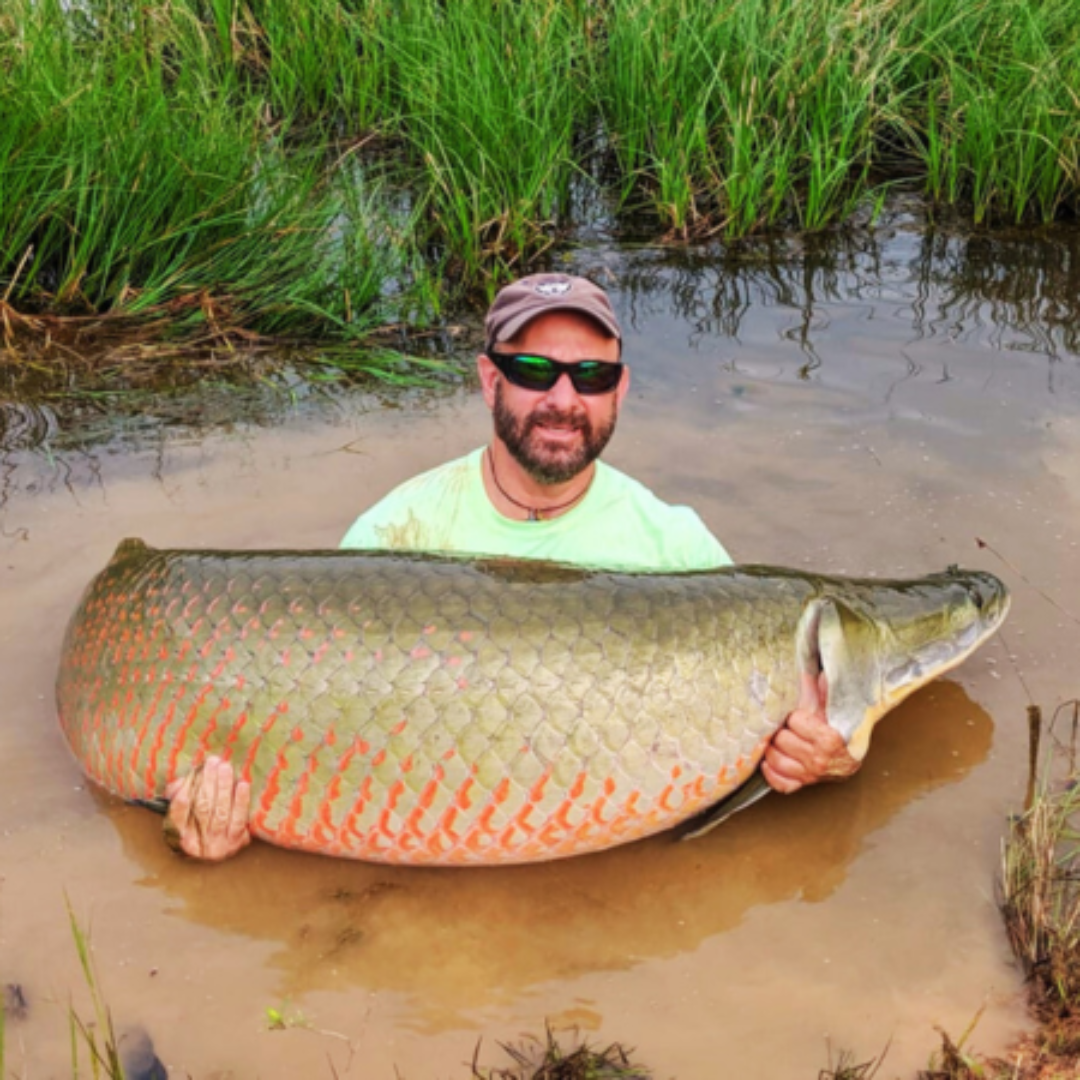
Arapaima can grow more than 200 pounds. These giants are found in lagoons and slow brackish water. Their size and strength are incredible, and you will never forget the moment you start reeling in one of these Amazon beasts.
Arapaima Focused Trips
Golden Dorado Focused Trips
Hunt for the hard-hitting golden dorado, a powerful, acrobatic predator known for its dazzling gold color and aggressive behavior. These apex freshwater fish are a bucket-list target for experienced anglers.
Paraná River | Argentina
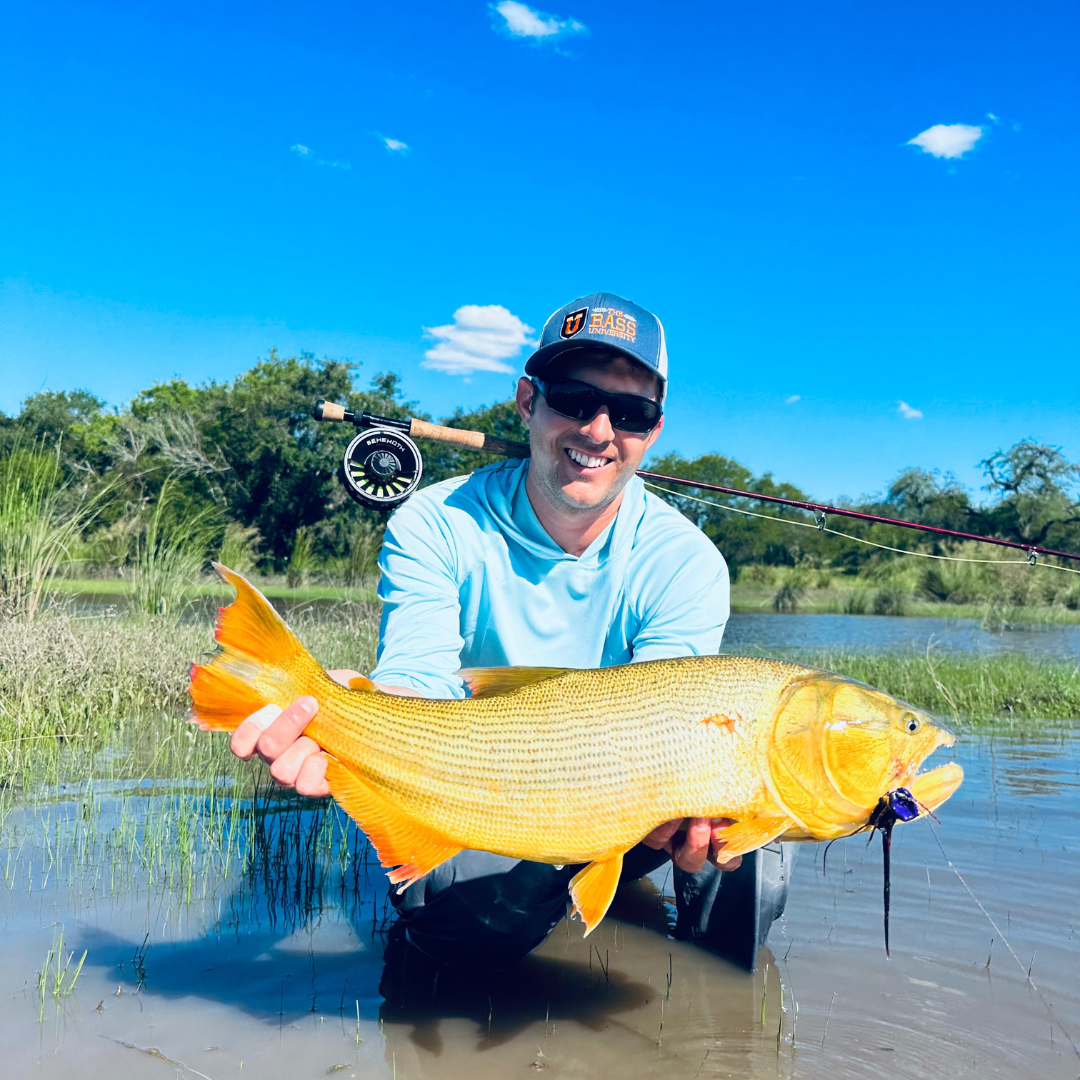
This fishery gives you multiple opportunities to catch Dorados. The lower Paraná is generally known as an area that delivers a high quantity of fish. When conditions are good anglers typically catch 10-30 dorados a day.
Arapaima Focused Trips
Arapaima Focused Trips
WHAT OUR ANGLERS HAVE TO SAY
Join Us: Get monthly newsletters, discount offers and new content notifications exclusively for our members. Join for FREE below with your name and email.
Join Us: Get monthly newsletters, discount offers and new content notifications exclusively for our members. Join for FREE below with your name and email.
Read Our Newest Blogs
Lorem ipsum dolor sit amet, consectetur adipiscing elit. Aliquam

Amazon Rivers: Black, Blue, and White
The Amazon Basin is a vast waterway system. No two rivers are the same, but rivers are generally classified into three major buckets due to their color. Let’s look at these classifications and what causes the color variations.
BLACK WATER RIVERS:

Black Water and beautiful beaches make up the Rio Negro, the largest Black water river.
The most visited type of river by anglers due to it being the home of the largest species of peacock bass the Cichla, Temensis. Blackwater rivers are often described as a tea coloration.
A common question is what causes the tea coloration? To answer this question please see the explanation from the book The Amazon: What Everyone Needs to Know.
Blackwater rivers represent a freshwater tea created when plant matter that has fallen or washed into the river fails to completely decompose. The sandy soils surrounding blackwater rivers support few microorganisms that would otherwise decompose the leaf litter remnants, and the high concentrations of tannins and other plant compounds remain suspended in these rivers, giving them their characteristics color and making them highly acidic. (1)
Another valuable explanation comes from the book. Floods of Fortune: Ecology & Economy Along the Amazon.
Blackwater rivers, which are free of heavy sediment but dark in color. They owe their special character to the millions of years of erosion that have ground down the Brazilian and Guiana highlands into sands that now fill the Amazon Basin. Because millions of years of weathering, the sandy soils are very poor in nutrients. The streams that are born on them are among the most chemically pure on Earth. Why, then, the blackness?
It turns out that the sandy soils are too poor in microorganisms (especially fungi, bacteria, and invertebrates) to easily decompose organic matter. Organic chemicals, moreover, that would easily bind to clay sediments have no affinity for sand. The organic overload thus seeps through the soil and is carried into streams and rivers, rendering some as dark as tea. Blackwater rivers are highly acidic, with a pH usually below 4.0. (2)
To clarify, this doesn’t mean that Blackwater rivers are low in aquatic life. Peacock bass must have a stable and abundant food source to grow to the size that they do.
The lower Rio Negro harbors the most diverse fish fauna of any freshwater river in the world, having twice as many species (700) as all the rivers of western Europe combined. Most of these species are relatively small in size.” (1)
BLUE (OR CLEAR) WATER RIVERS:

Wolfish below a small rapid in a Clearwater Amazon River.
Blue water rivers are often clear and beautiful.
Rivers and streams that drain uplands to the east of the Andes are usually clear or almost so. These waterways arise in the old, worn-away mountains of the Brazilian Highlands to the south and the Guiana Highlands to the north. Chemically these clear water rivers range from acidic to nearly alkaline, but in general they are relatively nutrient-poor. The three largest clearwater rivers are the Rio Tapajos, Rio Xingu, and Rio Tocantins. All drain the Brazilian Highlands and enter the Amazon River from the south. (2)
Just as Rocky Mountain streams are effected by annual snow melt runoff, peak times during the rainy season can make these clear water streams temporarily off colored. For that reason, we generally do not fish during peak flows.
At the multi-species destination, the Rio Aripuanã, the river is clear and anglers can often spot fish while floating down the river. This makes for visual and exciting sport fishing opportunities.
WHITE WATER RIVERS

Rio Madeira
These White Water Rivers are not referring to rivers for paddle sports. These rivers have a high sediment load and are often a milky, coffee color. The Rio Solimoes which by many is considered the beginning of the Amazon River is a White Water River.
Amazonian whitewater rivers-despite the name-are more of a café-au-lait muddy brown than white. The color is due to sediments derived from the Andes.
These muddy rivers begin as clearwater streams in the Eastern Andes, where they start their descent into the Amazonian lowlands, gathering sediment along the way. As such, in the words of Michael Goulding, “the Andes are the main nutrient bank for the Amazon.” And the main body of the mighty Amazon-called the Rio Solimoes in Brazil-is a whitewater river. (1)
If you would like to see a map of the Amazon Basin distinguishing the major rivers by their river type, then please see the link below and scroll to the 4th page:
Resources:
The Amazon: What Everyone Needs to Know. Mark J. Plotkin. Page 38,39.
Flood of Fortune. Ecology & Economy Along The Amazon. Michael Guilding, Nigel J.H. Smith, and Dennis J. Mahar. Page 5, 6,7
A Classification of Major Naturally-Occuring Amazonian Lowland Wetlands. Multiple Authors. See page 3 for map.

(866) 832-2987

